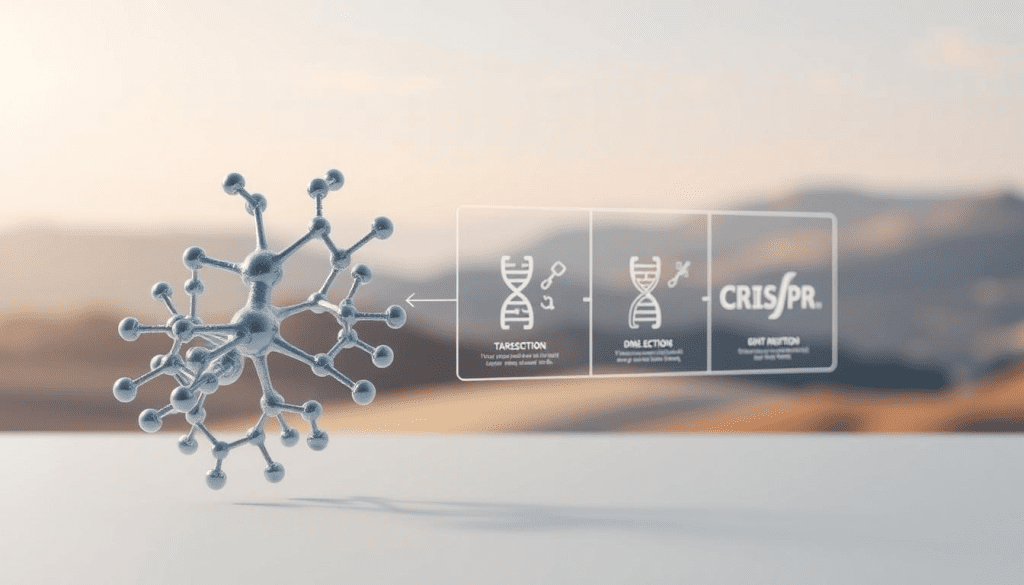Last Updated on October 20, 2025 by
We are seeing a major breakthrough in medicine. KJ Muldoon, the first baby treated with CRISPR gene-editing therapy, is a key example. He was born with a rare and dangerous condition called severe carbamoyl phosphate synthetase1 (CPS1) deficiency. At six months old, he got his first dose of the therapy at the Children’s Hospital of Philadelphia.

This treatment is a big step forward in genetic medicine. It shows a new era of precision medicine. This era is changing how we treat genetic diseases that were once thought to be untreatable.
KJ Muldoon’s treatment with CRISPR gene editing has brought hope to families with rare genetic conditions. He was diagnosed with CPS1 deficiency, a rare metabolic disorder. This affects 1 in 1.3 million newborns and makes it hard to break down ammonia, which can be deadly.

CPS1 deficiency is a severe genetic disorder that needs quick and effective treatment. KJ’s condition was caught early, and his team found that usual treatments didn’t work well. This disorder not only harms his health but also affects his development.
KJ’s medical team and family thought long and hard before trying gene editing with CRISPR-Cas9. They hoped to fix the genetic issue causing KJ’s condition. The treatment involved base editing to fix the Q335X mutation in KJ’s DNA. He got three doses of the therapy in February, March, and April 2025.
Using gene editing in KJ’s case is a big step forward in treating rare genetic disorders. It aims to lessen the effects of CPS1 deficiency and improve KJ’s quality of life.
We will dive deeper into KJ’s treatment and the science behind the gene editing technology in the next sections.
It’s key to know the genetic reasons behind CPS1 deficiency to find good treatments. This condition stops the liver from breaking down protein byproducts. This buildup leads to too much ammonia, which is harmful.
Carbamoyl phosphate synthetase 1 (CPS1) is a vital enzyme in the urea cycle. It helps remove ammonia, a harmful byproduct of protein breakdown, from the body. The liver is where most of this cycle happens, with CPS1 starting it off by turning ammonia into carbamoyl phosphate.
This process is essential to avoid ammonia buildup. Without enough CPS1, the body can’t detoxify ammonia well. This can cause hyperammonemia, a dangerous condition with high ammonia levels in the blood.
The Q335X mutation affects the CPS1 enzyme’s function. It causes CPS1 to not work right, leading to CPS1 deficiency. This mutation is one of several that can cause this condition, but it’s a big deal in cases like KJ Muldoon’s.
Gene editing, like CRISPR-Cas9, might help treat CPS1 deficiency. It aims to fix the genetic problem by making CPS1 work right again. This could solve the root cause of the condition.
Key aspects of CPS1 deficiency and its genetic basis include:
Knowing the genetic cause of CPS1 deficiency helps in finding treatments. Gene editing, as seen in KJ Muldoon’s case, is a big step forward in treating genetic diseases.

CRISPR technology is leading the way in genetic medicine. It allows for precise changes to the human genome. This is changing how we treat genetic diseases, thanks to CRISPR-Cas9 gene editing.

CRISPR-Cas9 is a groundbreaking tool for gene editing. It makes precise cuts in DNA at specific spots. This is done by guiding the Cas9 enzyme to the right spot with a small RNA molecule called a guide RNA.
After the DNA is cut, the cell fixes it. This can correct mutations that cause diseases.
The process involves several key steps:
Base editing is an improvement over CRISPR-Cas9. It changes one DNA base to another without breaking the genome. This is great for fixing point mutations, like the Q335X mutation in KJ’s case.
The benefits of base editing include:
Base editing was used in KJ’s treatment to fix the Q335X mutation in the CPS1 gene. This offers a precise and potentially safer way to treat genetic diseases.
As we keep improving CRISPR gene editing, we’re getting closer to making genetic medicine a reality for many diseases. The advancements in CRISPR-Cas9 and base editing are opening up new treatment options that were once unthinkable.
KJ’s journey started with a detailed diagnosis and assessment. This led to a groundbreaking gene editing therapy. The first step was key to understanding his condition and finding the best treatment.
Genetic testing confirmed KJ had CPS1 deficiency. It found the Q335X mutation causing his condition. This phase was important for preparing for the gene editing treatment.

In February, March, and April 2025, KJ got three doses of gene-editing therapy. The treatment used base editing to fix the Q335X mutation in his DNA. This three-dose plan was designed for safe and effective treatment.
Base editing technology was a big step forward in gene editing. It aimed to fix the genetic mutation and improve KJ’s life quality.
After each dose, KJ was closely monitored. The team watched for any side effects or complications. This careful watch was key to the treatment’s success.
The medical team was always ready to face any challenges. Their hard work and knowledge were vital for KJ’s recovery.
KJ, the first baby cured by CRISPR, has shown amazing results. His physical and developmental progress has improved a lot. This marks a new chapter in treating genetic disorders.
KJ has grown strong and can now sit up independently. This is a big deal for a child with CPS1 deficiency. It shows a big improvement in his health and development.
Also, KJ can handle more dietary protein and needs less medication. These changes make his life better and show how well the gene editing therapy works.
KJ’s recovery is truly remarkable compared to what’s expected for CPS1 deficiency. Kids with this condition usually face big delays and health issues. But KJ’s progress is significantly better than expected. This shows CRISPR’s power in treating diseases that were thought to be incurable.
The CRISPR treatment has been safe, with no big side effects. We keep a close eye on KJ’s health. This way, we can quickly deal with any side effects.
KJ’s successful treatment with CRISPR opens up new ways to treat rare genetic disorders. As we watch KJ’s progress, we’re hopeful about gene editing’s future. It could greatly improve the lives of kids with severe genetic conditions.
KJ’s treatment story is a tale of teamwork between experts. This team worked together to create a special gene editing therapy with CRISPR-Cas9 technology.
Thanks to teamwork, KJ’s therapy was developed quickly. Centers like Children’s Hospital of Philadelphia and Penn Medicine joined forces. They used their knowledge in gene editing and genetic medicine to make the therapy.
Genetic modification companies were key in this journey. They provided the latest technology and resources. This helped the team tackle the tough challenges of creating a new gene editing treatment.
KJ’s therapy was developed in just six months. This fast pace was thanks to CRISPR genome editing advancements. It allowed for quick design and making of the therapy.
Also, the regulatory process was streamlined. This helped the team move fast through the approval steps. It made sure KJ got the therapy quickly, which was very important.
KJ’s therapy went through strict checks to ensure it was safe and worked well. Regulatory bodies worked hand in hand with the team. This made it possible to quickly get the therapy to KJ.
KJ’s success shows the power of fast development in genetic medicine. It shows we can quickly bring new gene editing treatments to life. As we go forward, we’ll see more teamwork to keep pushing the boundaries in this field.
CRISPR gene editing has changed genetic medicine a lot. Looking at KJ’s case, we see how far we’ve come. It’s key to know the history behind this breakthrough.
Gene therapy has grown a lot over time. It had many important steps before CRISPR. Early tries were in the 1990s. But CRISPR-Cas9 changed everything.
These steps helped make gene editing better. They led to KJ’s treatment.
As gene editing got better, so did the debates about it. Issues like germline editing and off-target effects were big concerns. Rules had to change to keep up.
“The ethics of gene editing are complex and multifaceted, requiring careful consideration of both the benefits and risks.”
(Baylis, 2019; National Academies of Sciences, Engineering, and Medicine, 2017).
New rules helped KJ’s treatment move fast but safely. The FDA’s guidelines were key.
KJ’s case is big because of CRISPR’s success. The therapy was ready in just six months. This shows gene editing can fix diseases we couldn’t before.
Key factors for this success were:
KJ’s story is a big step for gene editing. It shows what’s possible for treating genetic diseases.
KJ’s story shows the power of N-of-1 genetic therapies for ultra-rare disorders. These treatments offer hope to those with unique genetic conditions. They are made just for one person with a rare genetic disease.
N-of-1 conditions are very rare, affecting just one person or family. Finding these conditions needs advanced genetic analysis and deep knowledge of the disease’s genetics.
The process involves:
Creating N-of-1 genetic therapies brings up big economic and ethical questions. Making a treatment just for one person can be very expensive. There are also worries about who can get these treatments and if it’s fair.
Key considerations include:
Even though N-of-1 genetic therapies are for one person, researchers are looking for ways to make them more available. They want to find ways to use the same technology for different rare genetic conditions.
Strategies for scalability include:
By improving N-of-1 genetic therapies, we’re not just treating rare disorders. We’re also opening up new paths in genetic medicine. As we keep working on these treatments, we need to think about the science, money, and ethics. We want to make sure everyone has a chance to get these life-changing treatments.
KJ’s treatment with CRISPR gene editing is a big step for genetic medicine. It shows we can treat not just rare diseases but also common ones. This technology could change how we approach many health issues.
The CRISPR genome editing method used in KJ’s treatment is promising. It could help cure many genetic diseases. For example, it might treat sickle cell anemia, muscular dystrophy, and Huntington’s disease.
KJ’s treatment shows gene editing CRISPR works well in humans. This breakthrough could make new treatments faster and cheaper. It’s a big step towards better health care.
Researchers can now work faster on other genetic therapies. They can make gene editing better and safer. This will help bring new treatments to market sooner.
As we learn genetics, CRISPR simulation and other gene editing, we must watch patients closely. We need to follow their health for a long time. This ensures the treatments are safe and work well.
This careful monitoring and research will help us improve genetic medicine. We can make sure gene editing is safe and effective for everyone.
We are at a groundbreaking moment in treating genetic diseases. KJ’s gene editing therapy has shown success. This opens a new chapter in treating conditions that were once thought incurable.
CRISPR gene editing in KJ’s treatment has brought remarkable results. This success encourages genetic modification companies to explore new areas in genetic medicine. We must keep advancing gene editing, tackling both challenges and opportunities.
KJ’s treatment success gives us hope for treating other genetic disorders. The future of genetic medicine looks bright, with many possibilities. We will keep studying the long-term effects of gene editing to ensure it improves human health.
CRISPR-Cas9 is a way to change the human genome. It targets specific DNA sequences and makes precise cuts. This allows for fixing mutations that cause diseases.
CPS1 deficiency is a rare metabolic disorder. It’s caused by a mutation in the gene for carbamoyl phosphate synthetase1. This enzyme is key for the urea cycle. The Q335X mutation stops it from working right, causing ammonia buildup.
Base editing is a new method that improves on CRISPR-Cas9. It makes precise DNA changes without breaking the DNA strands. This makes it safer and more effective.
KJ’s treatment led to big improvements. He grew well and gained motor skills like sitting up on his own. There were no major side effects.
N-of-1 genetic therapies are custom treatments for rare disorders. They raise questions about cost, ethics, and how to make more treatments.
KJ’s case shows gene editing’s power to cure genetic diseases. It’s a big step forward in genetic medicine, opening doors for more treatments.
KJ’s case could lead to new treatments for genetic disorders. It might speed up treatment development and improve ongoing research and monitoring.
Germline editing changes genes in reproductive cells, affecting future generations. KJ’s treatment was somatic, but the tech has germline implications too
CRISPR genome editing targets DNA sequences and makes precise cuts. It can fix mutations causing diseases. It’s used for treating genetic diseases like CPS1 deficiency and more.
CRISPR gene editing has changed genetic medicine. It allows for precise genome changes, giving hope for treating diseases once thought incurable.
References
Subscribe to our e-newsletter to stay informed about the latest innovations in the world of health and exclusive offers!